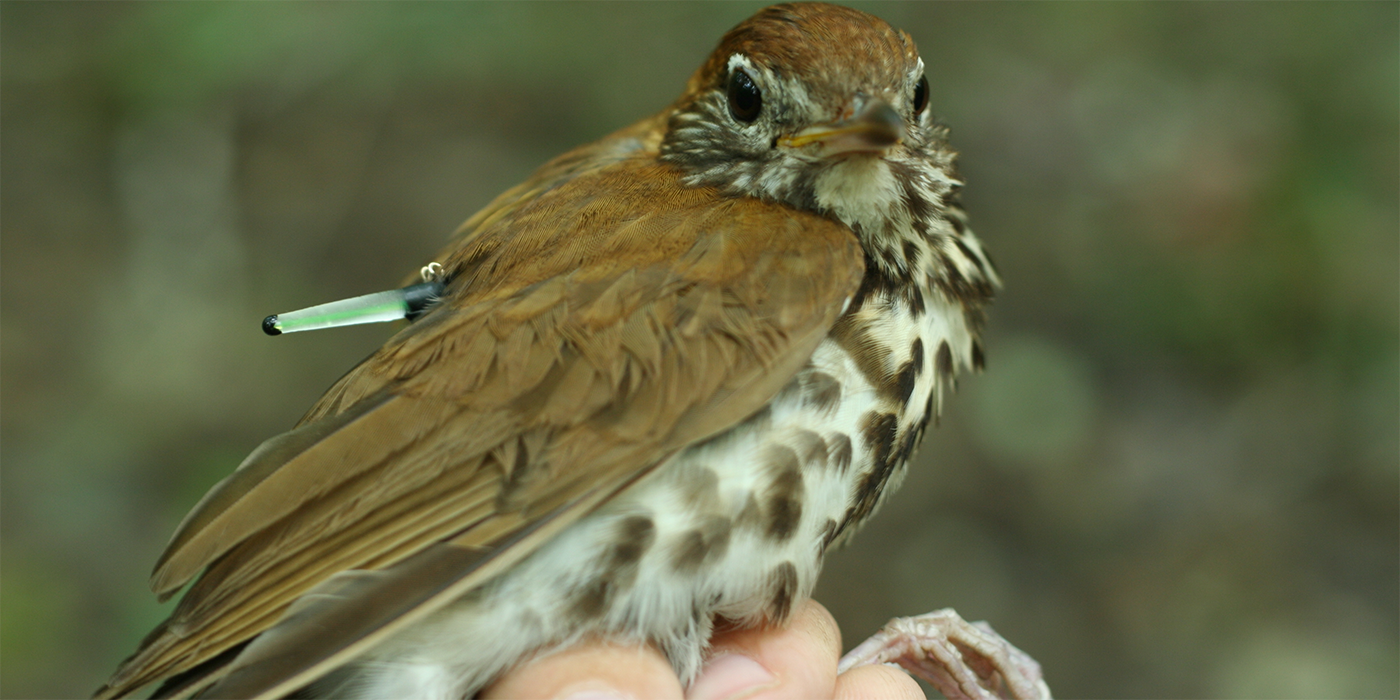Wood Thrush
This project is no longer active. Please contact us with any inquiries.
Smithsonian Migratory Bird Center scientists use a diversity of field methods, such as bird banding and point counts, to better understand the factors that are negatively impacting wood thrush populations on public lands in the Midwestern United States.
The wood thrush was once a common bird in forested habitats throughout North America, well-known for its beautiful, flute-like song. Despite substantial conservation efforts, this charismatic species has steadily declined by 60 percent over the past 25 years.
Since 2011, SMBC researchers have studied wood thrush populations at Crane Naval Surface Warfare Center, Big Oaks National Wildlife Refuge and within state forests and parks throughout southern Indiana. The scientists are investigating which habitat features support "source" populations that produce excess offspring and contribute to long-term population stability. Likewise, they hope to identify why some habitats fail to produce enough offspring to prevent further decline in wood thrush numbers.
By documenting the causes of wood thrush population decline and identifying the most cost-effective monitoring approaches, this research will help the Department of Defense and natural resource managers develop proactive conservation and management solutions. Ultimately, scientists hope this research can mitigate wood thrush population declines to maintain this charismatic species in North American forests.











